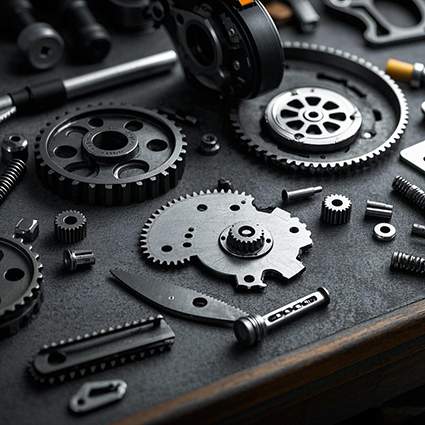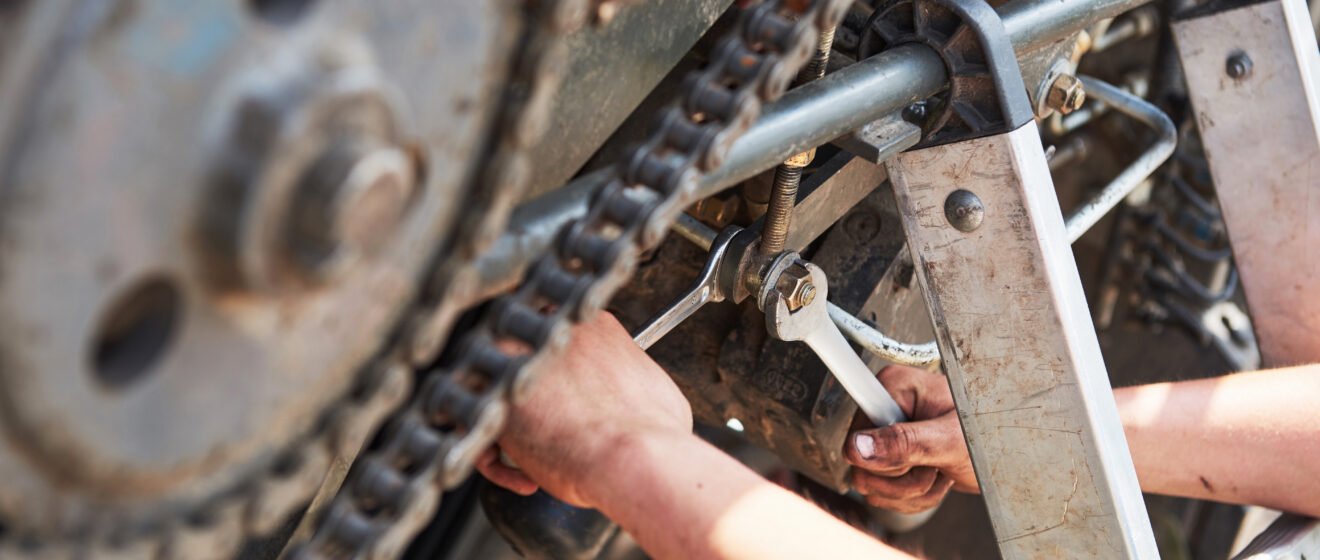A chainsaw is a powerful tool that can tackle a variety of tasks, from cutting down trees to trimming branches. While most people are familiar with the basic operation of a chainsaw, not everyone understands the importance of each individual chainsaw part that keeps it running smoothly. Whether you’re a professional logger, a weekend gardener, or someone who simply needs to maintain their chainsaw, understanding chainsaw parts is crucial for performance, safety, and longevity.
In this article, we will explore the most critical chainsaw parts, how they function, and how to maintain them properly. We’ll also discuss the importance of choosing high-quality replacement parts and why paying attention to these components can save you time and money in the long run.
Key Chainsaw Parts and Their Functions
1. Engine
The engine is the heart of any chainsaw, driving the entire system. Chainsaw engines come in two main types: two-stroke and four-stroke engines. Two-stroke engines are lighter and more compact, making them ideal for portable, handheld chainsaws. On the other hand, four-stroke engines are more fuel-efficient and tend to last longer, but they are heavier and typically found in larger, professional-grade models.
The engine’s primary function is to provide the necessary power to drive the chain, allowing the chainsaw to cut through wood efficiently. Regular maintenance, such as changing the spark plug and cleaning the air filter, is essential to keep the engine in good working order.
2. Carburetor
The carburetor is a critical chainsaw part that controls the mixture of air and fuel that enters the engine. If the carburetor malfunctions, the engine may run poorly, causing issues like stalling, poor acceleration, or excessive smoke. Ensuring the carburetor is clean and well-adjusted is essential for peak performance.
It’s also essential to use the proper fuel and oil mix (for two-stroke engines) and clean or replace the carburetor filter regularly to prevent clogging and maintain smooth operation.
3. Chain and Bar
The chain and bar are the most recognizable chainsaw parts and are responsible for the actual cutting process. The bar is the long, flat metal piece that the chain wraps around, and the chain itself consists of sharp teeth that rotate around the bar to cut through wood.
Choosing the correct size and type of chain for your chainsaw is important to ensure efficient cutting and reduce wear. Additionally, regularly sharpening the chain, checking the tension, and lubricating it will extend its life and improve the quality of cuts. A well-maintained chain and bar can make a significant difference in cutting speed and accuracy.
4. Clutch
The clutch is responsible for engaging and disengaging the engine from the drive system. When the chainsaw is idling, the clutch is disengaged, preventing the chain from moving. As you pull the trigger, the clutch engages, causing the chain to rotate and start cutting.
If the clutch becomes worn out, it may cause the chain to spin when the engine is idling or fail to engage properly when the throttle is pressed. Regular inspection of the clutch can prevent such issues.
5. Air Filter
The air filter plays an essential role in protecting the engine by preventing dirt, debris, and other contaminants from entering. Over time, air filters become clogged with dust and particles, reducing the engine’s efficiency and performance.
To maintain optimal performance, it’s crucial to clean or replace the air filter regularly. A dirty air filter can lead to engine overheating and poor combustion, reducing the lifespan of the engine.

6. Fuel Tank and Fuel System
The fuel tank stores the gasoline needed to power the chainsaw. The fuel system also includes the fuel filter, which prevents debris from entering the carburetor, and the fuel line that delivers the gas to the engine. It’s essential to use the right fuel and oil mixture, as the wrong mix can damage the engine.
Checking the fuel system for leaks and replacing the fuel filter as needed will keep your chainsaw running efficiently. If the fuel lines are cracked or damaged, replacing them is essential to avoid fuel loss and ensure proper fuel flow.
7. Starter Mechanism
The starter mechanism is what you engage when starting the chainsaw. It consists of a pull rope, a recoil spring, and a starter pulley. Pulling the rope activates the starter and cranks the engine.
A malfunctioning starter mechanism can make it difficult to start the chainsaw, leading to frustration and delays. Regular inspection of the pull cord, ensuring it’s not frayed, and making sure the recoil spring works correctly can prevent issues with starting.
8. Throttle and Trigger
The throttle and trigger allow the operator to control the engine’s speed and power. When you squeeze the trigger, the throttle opens and sends more fuel to the engine, increasing its speed and the cutting power of the chainsaw.
If the throttle becomes sticky or unresponsive, it may be due to dirt or wear in the trigger mechanism. Proper lubrication and cleaning can prevent issues with throttle responsiveness, giving you better control over the saw.
9. Vibration Dampening System
Chainsaws are powerful machines, and their engines can generate a lot of vibration during operation. The vibration dampening system consists of springs or rubber components that absorb the vibrations and reduce the impact on the operator’s hands and arms.
Excessive vibration can lead to fatigue and discomfort, and it can also cause damage to other chainsaw parts over time. If you notice unusual vibrations while operating your chainsaw, check the dampening system for wear and replace it if necessary.
10. Muffler
The muffler reduces the noise produced by the engine and expels exhaust gases. A clogged or damaged muffler can lead to engine overheating and reduced performance. It’s important to inspect the muffler regularly for any blockages or damage.
A well-maintained muffler ensures your chainsaw operates at optimal efficiency and reduces the impact of noise pollution on the environment and people nearby.
How to Maintain and Care for Your Chainsaw Parts
Regular maintenance is key to ensuring the longevity and performance of your chainsaw. Here are some essential tips for maintaining chainsaw parts:
1. Regular Cleaning and Inspection
After each use, clean your chainsaw thoroughly to remove dirt, debris, and sap buildup. Pay close attention to the chain, bar, air filter, and carburetor. Inspect the chain for sharpness and wear, and check the bar for any damage or bending.
2. Sharpen the Chain
A dull chain not only slows down cutting but also puts more strain on the engine. Sharpen the chain regularly to keep it in optimal condition. If you’re unsure about how to sharpen the chain, consult the user manual or seek professional help.
3. Lubricate the Chain and Bar
Proper lubrication is essential to reduce friction between the chain and bar. Use high-quality chain oil and check the oil level before each use. Keeping the chain and bar properly lubricated will extend their life and improve cutting performance.
4. Replace Worn or Damaged Parts
Over time, certain chainsaw parts will wear out and require replacement. The most common parts that need replacement are the chain, air filter, spark plug, and fuel lines. Always use high-quality replacement parts to ensure your chainsaw continues to operate at its best.
5. Store Your Chainsaw Properly
When not in use, store your chainsaw in a dry, cool place. If you’re storing it for an extended period, empty the fuel tank and clean the components to prevent any buildup or damage.
The chainsaw parts we’ve discussed in this article are just a few of the essential components that keep your chainsaw running smoothly. By understanding the function of each part and regularly maintaining them, you can ensure your chainsaw performs at its best for years to come.
Investing in high-quality chainsaw parts is essential to achieving reliable performance, safety, and long-term durability. Whether you’re cutting firewood for the winter, trimming branches, or working on professional logging tasks, taking care of your chainsaw will allow you to complete your tasks with efficiency and ease. Always prioritize maintenance and care to keep your chainsaw in top condition.





